Microsoft Natural Ergonomic Keyboard 4000 (2005)
The Microsoft Natural Ergonomic Keyboard 4000, came out in 2005.
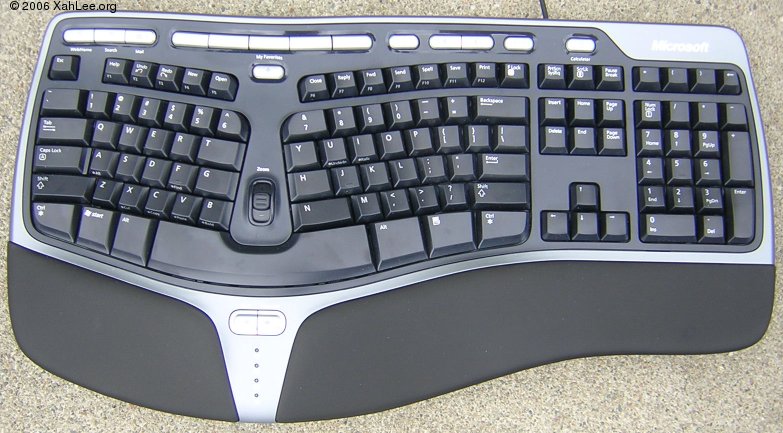
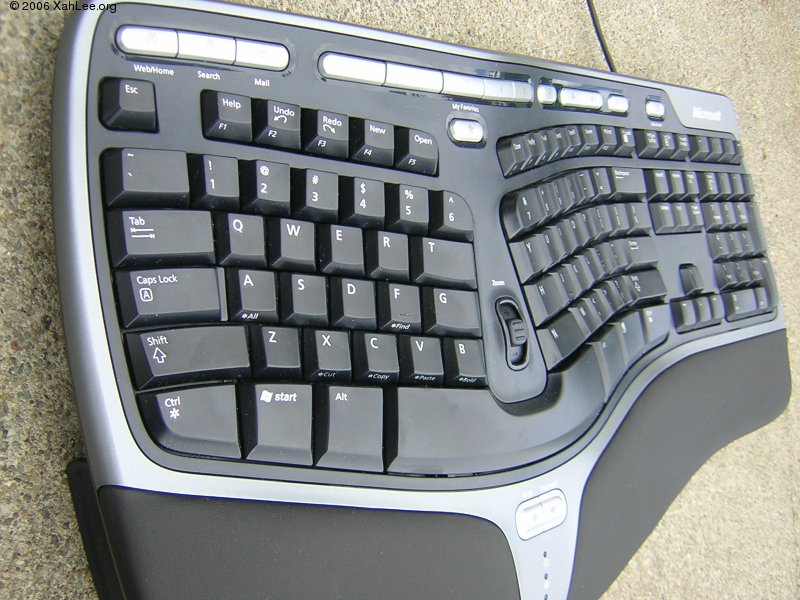
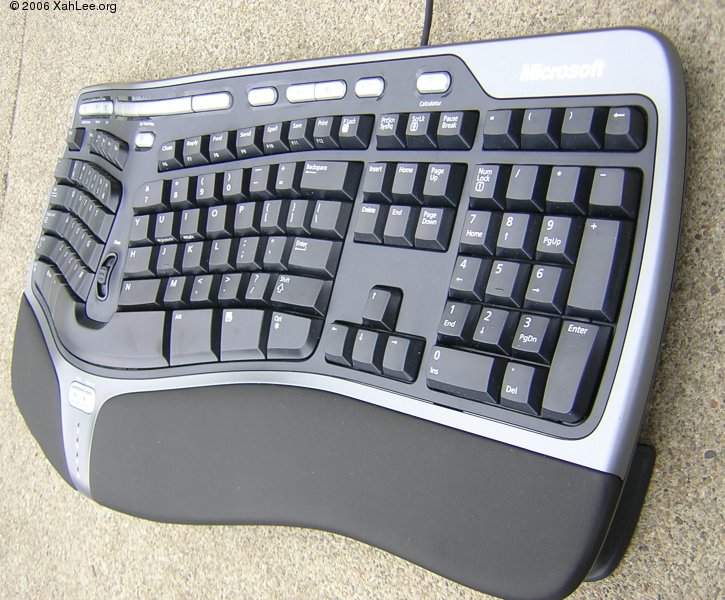
This keyboard is a major change from their previous ergonomic model the Microsoft Wireless Natural Multimedia keyboard.
Major Features
Front tilt
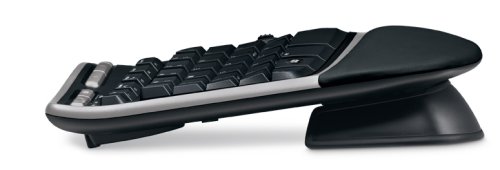

The keyboard features a front-tilt, and large palm rest. For example, The Space is about 2 cm higher than the F5 key. This is GOOD.
Usually, people like to prop up the back legs of their keyboard so that they actually have to bend their wrists upward to type. That this bad.
Rest your forearm on a table and let your hand relax, you'll notice that your wrist bends upward about 30°. Now, tab your finger tips on the table as if making a impatient gesture. You will feel discomfort after some 20 minutes. Now, place book under your wrist. You'll notice it's more comfortable. Because, wrist don't bend upwards. This is what the MS 4000 front-tilt does.
Raised Middle for Comfort
Also, the F key is ~1 cm higher than A, and similarly for the right side. This is good because when you don't have to rotate your forearm.

Inverse V for Separate Hands
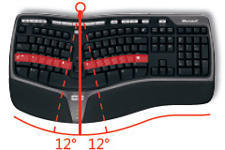
The physical shape of the keys are now curved in several ways. For example, in previous Microsoft ergonomic keyboards, the Caps-Lock and ASDFG keys all are on a straight line. But with 4000, this is no longer so.
The keys are curves for good reasons, for example, pinkies are shorter. So, the A key is curved towards you.
When i have to press Shift or Ctrl keys on the 4000, i have to bend my wrist to the side, much more with this curved layout than previous MS ergonomic keyboard. So, the curves are not necessarily better for everyone.
Traditional Arrangement of Home Key Group
There are 2 type of arrangement for the key cluster {Insert, Delete ⌦, Home, End, PageUp, PageDown}. Traditionally, they are arranged in 2 rows, 3 columns. Since about year 2000, some arrange it in 3 rows, 2 columns.
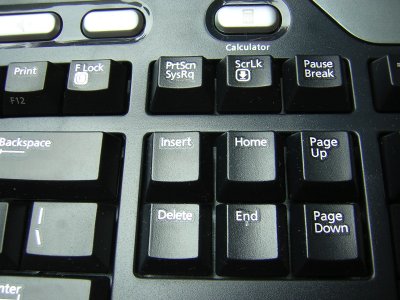
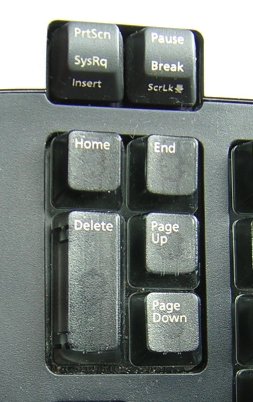
Some hate one or the other, but it's really just habit. See: Computer Keyboard: Home/End Key Cluster Arrangement .
Special Keys and Knobs
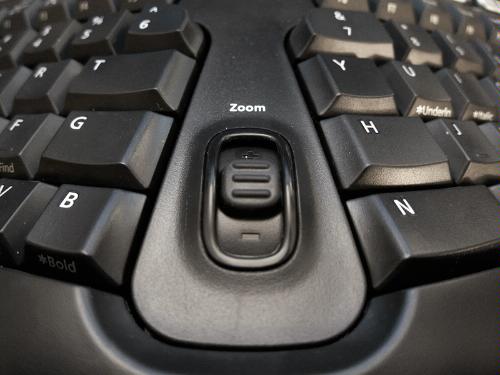
• There is a Zoom Slider. You can use it to zoom-in or zoom-out in web browser. I find this very useful. It works in all applications that zoom makes sense that i've tried. All Microsoft apps, Internet Explorer, Google Chrome, Safari, Opera, Gimp, Inkscape, Blender. In desktop folder (Explorer), you can use this to increase/decrease the photo's preview size. It's also very convenient when viewing photos. In most apps, you can zoom by holding Ctrl key and use the mouse scroll wheel, or press Ctrl++ and Ctrl+-. But a dedicated zoom slider is slightly more convenient.
The only problem i found is that the zoom does not work in Firefox by default. (it scrolls instead) If it doesn't zoom in some app, you can use the bundled software IntelliType to make it zoom, or scroll, or any other, but it requires some programing background. 〔see Microsoft IntelliType Hacks〕
• There are Back and Forward keys below the Space bar. This is convenient for browsing the web. These keys can also be reset with IntelliType to other purposes, such as switching to previous or next application, windows, or tabs.
• There are 4 new keys: = ( ) ← on top of the number keypad. This is convenient for those who uses the calculator application. These keys behave the same as the ones on the main section of the keyboard. Too bad that they can't reprogramed.
• The PrintScreen, Break, ScrollLock are each a physical key. (some keyboards don't even have them, or jam them into 2 physical keys with modifier for meaning.)
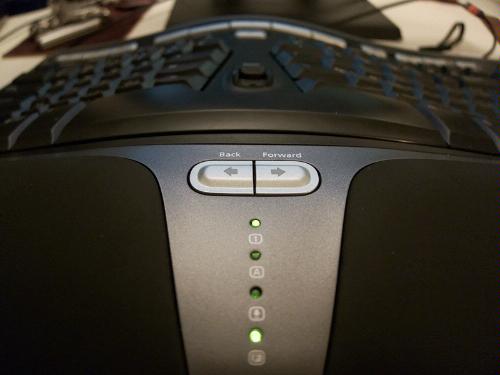
• The LED indicators for NumLock, CapsLock, ScrollLock, 🅵Lock are right in front of the keyboard, below the Space bar. This makes them easy to see. (This is a improvement from the Microsoft Wireless Optical Desktop Pro. There, the LEDs are on the USB transceiver that is often placed away or under your desk.)
(See also: How to Disable the F-Lock Key.)
Flaws
• There are many complaints about the Space bar being stiff. Some comment on Amazon mentions that they didn't have that problem. I also find the spacebar too stiff. Almost all the bad reviews on Amazon are about the Spacebar. Some hope that it'll soften overtime, but i can tell you it won't. I've been using this keyboard for 3 years now. Either you get used to it, or the spacebar spoiled the whole thing for you.
After using this keyboard for 3 years for heavy typing, the stiff spacebar is giving me hand problems. I switched back to the Microsoft Natural Multimedia Keyboard, and now am using Truly Ergonomic Keyboard .
• The Space bar is extremely loud, and it makes one big sloppy THUD sound. I really hate it.
• In the previous generation the Natural Multimedia Keyboard, there are next-song and previous-song buttons. This is not present in the 4000. So, now you have to switch to your music player first in order to skip to the next song. This is a terrible oversight. As a work around, you can make those special Back and Forward buttons to do the same. Overall, both keyboards have the same number of special keys, so it's a trade off. I set the Forward/Backward buttons to switch tabs in browser.
• The Ctrl keys have become smaller and less protruded. For emacs users, this is bad news. On the Natural Multimedia Keyboard, you can flatten the palm and press Ctrl that way very comfortably. But with the 4000, it's difficult to use palm to press the Ctrl key. Instead, you can curve your hand into a semi-fist to sit on the Ctrl. 〔see Never use your pinky to press Ctrl〕
• The key labels come off easily. Many reviewers have also mentioned this. I've been using this keyboard for about 3 years. About 4 key's labels are completely gone.
• One problem i found in this keyboard is that the right Alt key needs to have pressure on it for it to register. Note, it's just the right Alt. The left Alt works perfectly. The right Alt, needs pressure when you hold it down. When i use right Alt to do key combinations, often it results in just typing without having Alt down. This is very annoying. I don't know if this is just particular to the one i bought, or is a general problem of this keyboard. According to a blog by Greg Smith at http://notemagnet.blogspot.com/2009/11/ergonomic-keyboards-kinesis-vs.html , he seems also seeing this problem. Most of my Alt usage is done with the left Alt, and now i habitually apply more pressure when using right Alt.
Overall, this keyboard is of quality design, but cheap construction, intended for mass market.
Conclusion
- Great design, cheap build.
- Can you get used to the stiff spacebar? If so, this is great. Else, garbage. I abandoned this keyboard after 3 years, because spacebar is causing me problems.
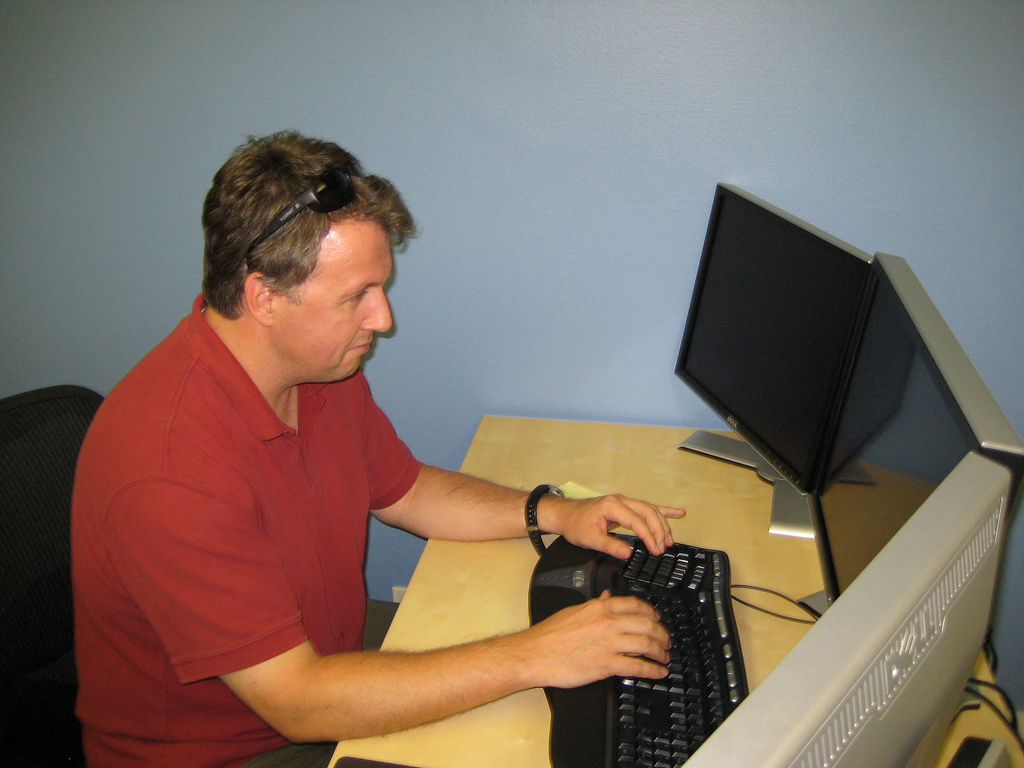
Where to Buy
Wireless Version?
Here's a strange photo. It seems to be a wireless version. And you can see there is a light indicator for battery in the middle bottom. But i can't find a wireless version of this keyboard.
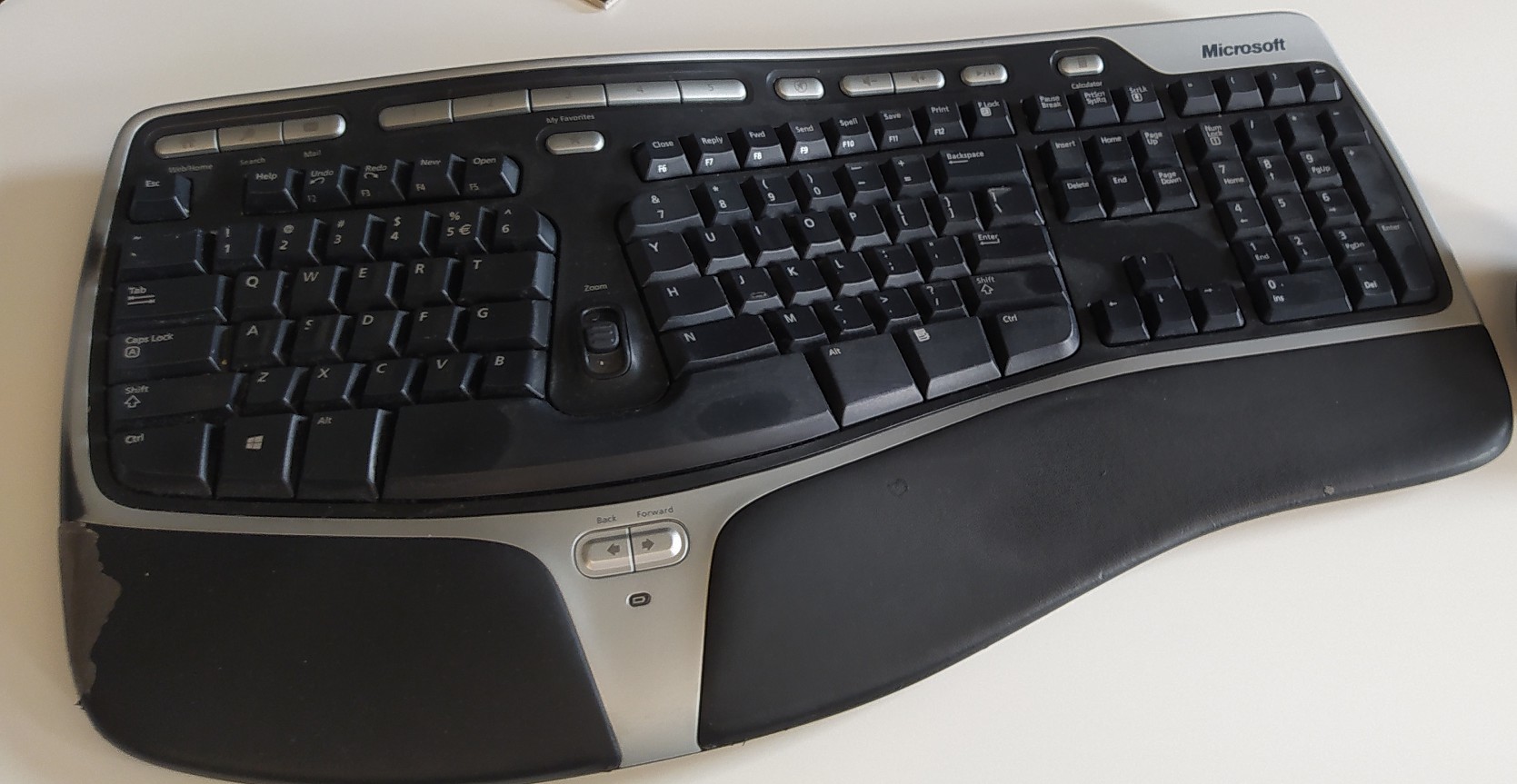
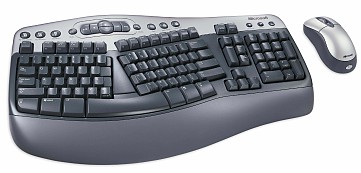 Microsoft Wireless Natural Multimedia keyboard
Microsoft Wireless Natural Multimedia keyboard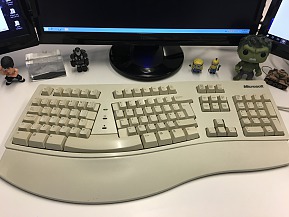 Microsoft Natural Keyboard
Microsoft Natural Keyboard